Elector Johann Georg the Second only wore these miner’s accoutrements studded with amethysts, topazes, turquoises and rock crystals once in his lifetime. That was at the so-called “Durchlauchtigste Zusammenkunft” – the illustrious meeting of 1678, when he met up with his three brothers in Dresden. The festivities on that occasion included a mining invention – a parade in which the Elector appeared in an elaborate miner’s costume, replete with this precious equipment.
The aim, of course, was to demonstrate the source of Saxony’s wealth... and his own position as the most important mine owner in Saxony. The Freiberg goldsmith Samuel Klemm worked on these accoutrements for two years – from 1675 to 1677. Incidentally, they do bear some relation to genuine miner’s equipment, and include a large axe, a small knife to cut tallow, a bag containing tallow and lighting equipment (essential for survival underground!), a miner’s lamp with a wick-trimmer, as well as an hat aigrette with a cord, buckles and medallions.
These miner’s accoutrements are made of materials found in Saxony, in the Erzgebirge region around Freiburg and Annaberg: silver and gold, rock crystal, garnets, smoked opals, black opals, milk opals and amethysts. Only the blue turquoises were not found in Saxony. Samuel Klemm created the superb imitations in enamel. He also made a number of oval-shaped medallions, with which the equipment was decorated. The scenes depict the process of mining silver – from its discovery with the divining rod... to its transformation into coins at the royal mint. Inscriptions complement the scenes. For instance, on the hat you can read: “God send his blessing upon the mountains!” The footplate of the axe bears the inscription: “The silver for this work came with God’s blessing from the Daniel mine in Schneeberg.”
This festive miner’s accoutrements provide important historical evidence of Saxony’s economic and cultural rise after the Thirty Years War. The Electors owned all the country’s mineral rights. Financiers exploited the country’s mineral wealth, but the Electors took a share of the profits. They were also part-owners of some mines and stone quarries.
Die Details entdecken
Sabre with jasper hilt and leather scabbard (miner's garniture of Johann Georg II)
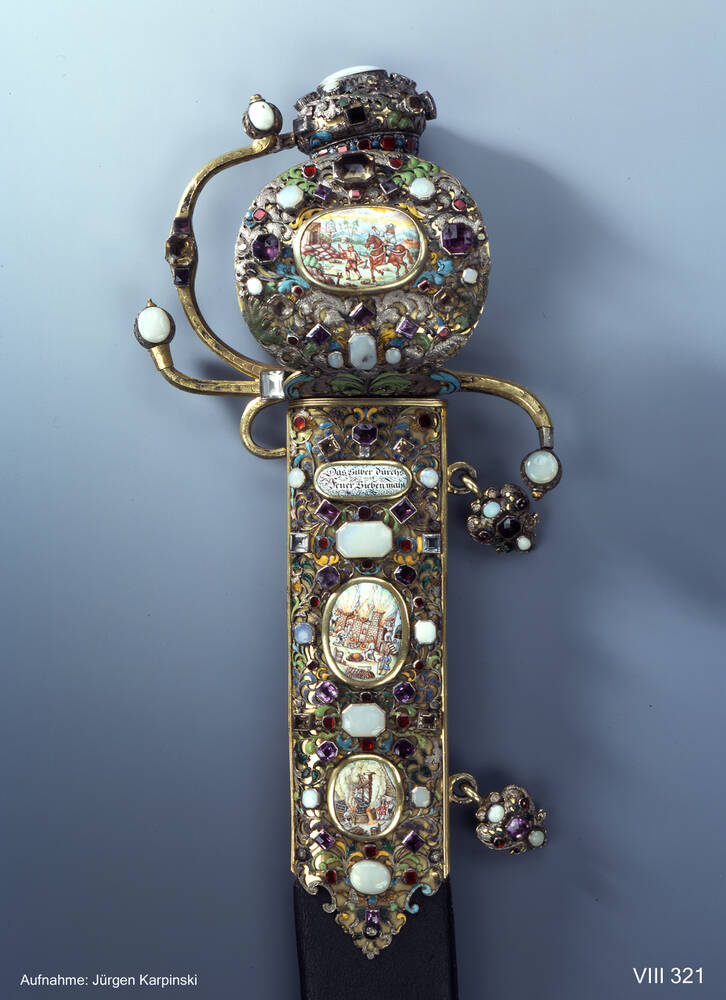
Miner's axe with the Electoral Saxon coat of arms (miner's ganiture of Johann Georg II)
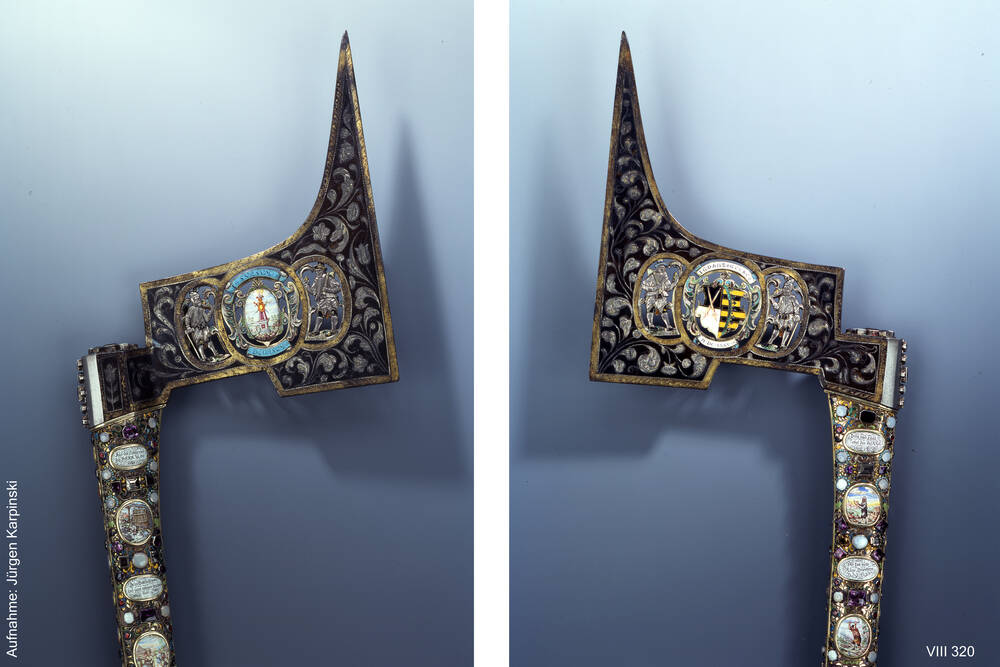
Small knive (>Tscherper<) with leather scabbard (miner's garniture of Johann Georg II)
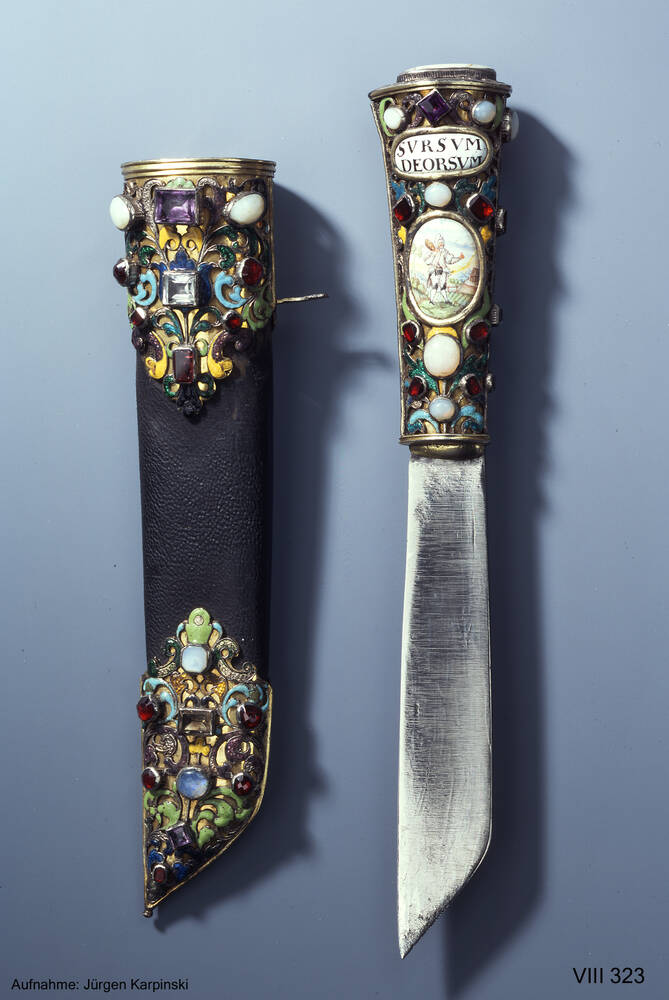
Leather bag (miner's garniture of Johann Georg II)
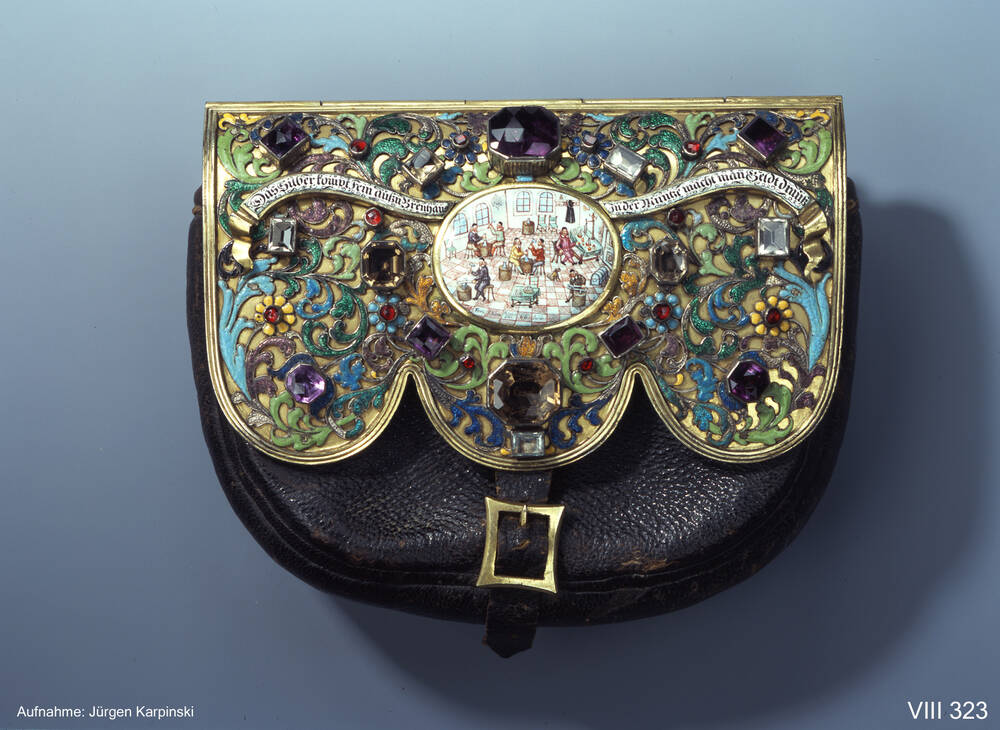
Miner's lamp with wick parer (miner's garniture of Johann Georg II)
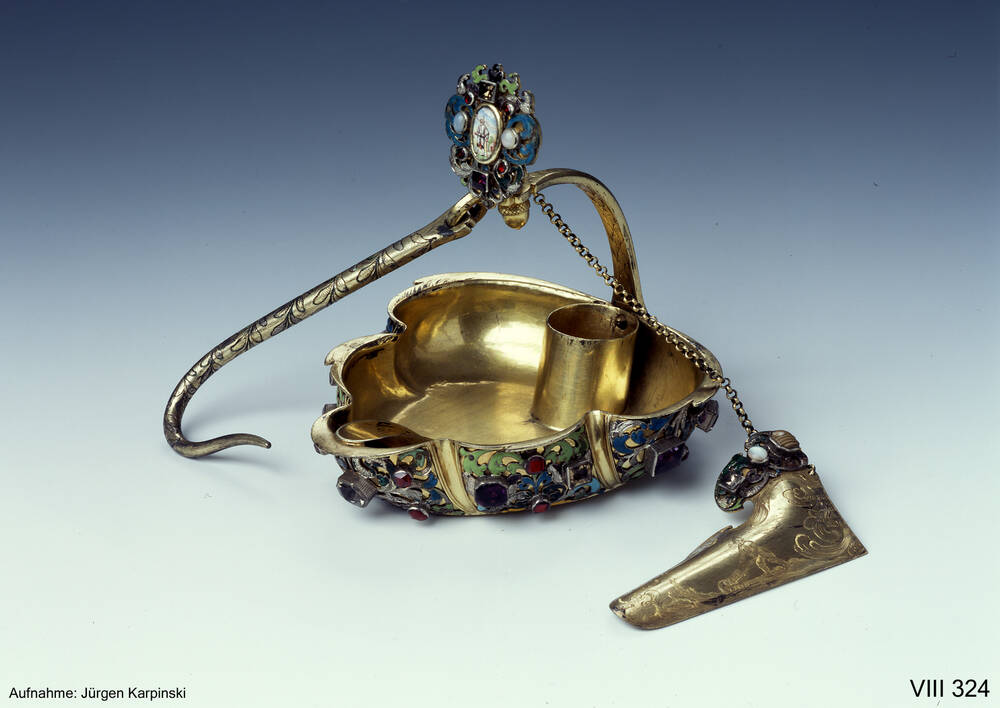
Hat ornament (Miner's garniture of Johann Georg II)
